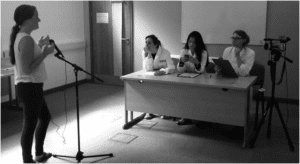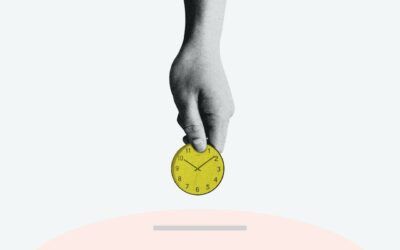Every morning (almost), after I finish my coffee and reading, I fire up the daily meditation on the Waking Up app by Sam Harris for either 10 or 20 minutes. Today’s was a Loving Kindness Meditation (LKM), one of my favorite meditation practices.
For LKM and me, it was not love at first sight. We first met several years ago at a week-long Mindful Self-Compassion retreat led by Chris Germer and Kristin Neff, the two leaders behind the development and worldwide growth of self-compassion studies and training.
I had dabbled in meditation before the retreat and tried it in secret, early in the morning, when no one would see me, trying (unsuccessfully) to stay focused on my breath, which at the time is what I thought meditation was all about.
During an afternoon session at the retreat they pulled a fast one on us. They had us close our eyes and picture someone close to us and say, in our heads, “may you be peaceful, may you be happy, may you be free from suffering.”
My first thought was, “your kidding, right?” Then it got even stranger. They told us to picture ourselves and then say the same things, i.e. “Michael, may you be peaceful, may you be happy, may you be free from suffering.”
At that moment, inside my thick skull, there was a sumo wrestling match going on as my old surgical self tried to push this loving kindness nonsense off my mental mat. He almost won, and he even almost convinced me to leave the retreat that afternoon.
I stuck the week out, and with more practice I started to enjoy saying may you be happy, may you be peaceful, may you be free from suffering about other people, and even myself. It just felt good. Like I was practicing being nice.
As Harris said in the morning meditation – “you feel your mind soften as you let go of self-concern.”
Soften. Imagine that if you can.
He’s right. As soon as I let go of my self-concern – what I had to do today, issues with people, the litany of crap swirling around inside my mind like a washing machine, and moved to picturing others and wishing them well, my mind softens as the normal mental tension and effort drifts away.
So what’s the deal with LKM anyway?
The word meditation is like the word sports. Just like there are many different kinds of sports (football, basketball, etc), there are many different meditation practices. Three of meditation practices I have in my arsenal are those studied by Tania Singer and colleagues: Breathing and Body Scan, Observing Thoughts, and Loving-Kindness meditation.
Unlike some forms of meditation that involve moment-to-moment non-judgmental awareness of whatever is bubbling up from the cauldron of our 100 billion brain cells into consciousness, Loving-Kindness meditation is a more of a top-down influencer of the brain.
The intention of LKM is very different from other meditation practices because it actively attempts to generate positive emotions and compassion for others.
At the start of an LK meditation session it is easiest to get in the groove by closing your eyes and picturing someone in your life with whom you have a close and easy relationship. Then you can slowly repeat the following phrases (or others of your choosing); “may you be happy, may you be peaceful, may you be free from suffering,” over and over while continuing to picture that person.
By kickstarting the LK meditation engine with someone you like or love, it is easy to get the psychological ball rolling and now, if you want, you can shift your attention to other people, including yourself, and ultimately even to people that irritate you or with whom you have a “challenging” relationship.
In an outstanding series of rigorously designed studies, Tania Singer and her colleagues at the Max Plank Institute in Germany studied the impact of the above 3 types of meditation practices in people who had never meditated before. One group of subjects were trained in LKM and then continued with guided practice for 3 months. At the end of three months they evaluated the impact of LKM in three ways.
First was the subjective impact of the practice. Just 3 months of LKM decreased their perceived levels of stress reactivity by 36%. The subjects also had an increased ability to focus, they felt more positive and warm, had higher levels of energy, and they perceived a decrease in thought distraction.
Second was the impact of a highly stressful event, the Trier Social Stress Test (TSST), on their blood cortisol levels. The TSST is a humorously medieval test that reliably activates the hypothalamic-pituitary-adrenal axis with release of stress levels of cortisol into the blood. The TSST unfolds as follows:
1. An IV is inserted and a heart rate monitor attached. Blood and saliva samples are taken for cortisol, the stress response hormone made by the adrenal glands.
2. The subject is taken into a room with a videocamera and 3 people (an interview panel) who reek of a New York City street level of indifference to your existence.
3. The poor soul then has to write out a 5 minute presentation with the instructions – “imagine you have applied for your ideal job for which you must convince the committee members why you are the perfect candidate.”
4. Suddenly, at the end of 5 minutes they snatch the paper and pen away.
5. Next they have to immediately give the presentation to the interview panel.
6. The members of the interview panel just sit and stare blankly at you while you sputter along for 5 minutes. If you finish before the 5 minutes are up they tell you to keep going.
7. Then, abruptly, for the last 5 minutes you are told to count backwards from 1,022 in steps of 13, and if you screw up you have to start over.
Sounds like fun right?
After the test the poor soul is let in on the fact that it was indeed a stress test (no kidding……they must be thinking) and blood and saliva samples are collected again.
This TSST is a great mimic for social stress because it creates feelings of unpredictability, lack of control, and a sense of social threat similar to the everyday experiences that create chronic stress in our modern world, especially in these coronavirus soaked days.
Since the TSST is a test that is based on deception, they administered the test to some subjects before training only and to others after only 3 months of practice and compared the aggregate results.
Singer and colleagues found that just 3 months of LK meditation practice decreased the cortisol stress response by 32%!
Third, fMRI studies before and after just 3 months of LKM led to significant thickening of the surface of the brain in regions associated with positive emotions and compassion.
That’s right. Like getting your biceps bigger with curls, just 3 months of LKM thickens up your positive emotion and compassion brain circuits.
Ok, you may not be interested in bigger biceps, but who wouldn’t want more positive emotions and compassion? That’s a great return on the small investment of time in LKM.
But it gets better. LKM is like caring around an epi pen for empathic pain. In the practice of medicine, psychology, and the clergy – any profession where humans are exposed to a lot of suffering – one can end up emotionally exhausted and burned out.
This empathic burnout happens because the empathy areas of the brain are getting lit up again and again as we are exposed to suffering, and when these areas get lit up, we end up suffering vicariously.
LKM is the epi pen for this kind of empathic distress. By pulling out the LKM epi pen when you are feeling overwhelmed and injecting some LK into your mental milieu, you can shut down the empathic distress and deactivate the empathic regions of the brain.
Better focus, less distraction, more positive affect, more energy, less intense physiologic stress response, and relief from empathic pain. That’s a big return for just 10-20 minutes a day.





Thanks for writing about Sam Harris and the resources that he provides. I have been meditating, or trying to meditate, for many years – a few decades, actually – and was stuck. Sam’s approach really clicked for me. It helped to read his book “Waking Up,” which provides details about his thinking about a non-religious approach to medication (“meditation stripped of religious baggage,” to paraphrase) and the neurology of meditation (he is a neuroscientist, which helps).